The story of Ria and Sakina and his first order was executed--قصة ريا وسكينة الكاملة والصور الحقيقية تنشر لأول مرة
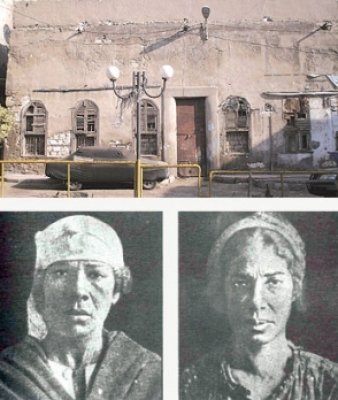
Ria and Sakina are two Egyptian sisters who are considered to be the most famous thieves in Egypt. They were known for forming a gang to kidnap women and kill them for theft between 1920 and 1921, causing panic in the Alexandria area. They were called Raya and Sakina Ali Hammam. And settled in the city of Alexandria in the early twentieth century, and then formed the gang to abduct women and killed them in partnership with Mohammed Abdel-Al, the husband of knife, who began her life as a saleswoman, and according to God Said Mari Raya's husband, and two others are Arabi Hassan and Abdul Razek Yusuf, as was said. ]
They were arrested and charged with premeditated murder of 17 women and convicted by the court. They were executed on December 21 and 22, 1921. Ria and Sakina are the first women to be executed in modern times. [3]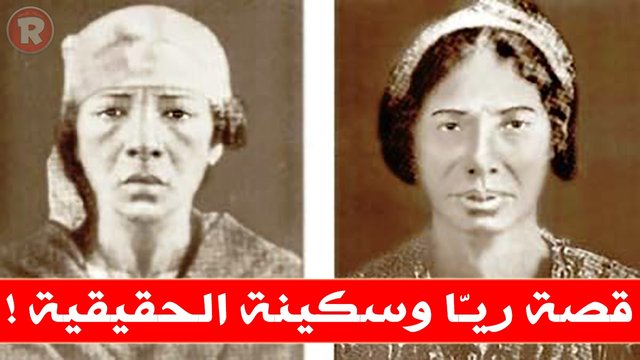
The beginning of the story [edit]
The two sisters were born in Upper Egypt, and Raya was the eldest of seven years old. Their father died at a young age. They moved to Beni Suef and then to Kafr El Zayyat where they worked in collecting cotton. She married Raya from God Said Mari and gave birth to " "And her other son, who died shortly after his birth. Sakina and her new husband moved to Alexandria in the Albaan neighborhood of Alexandria in 1918 and later her sister Raba with her family. Sakina married her husband and married Mohammed Abdel-Al, who was their neighbor at the time.
With the grinding economic conditions facing the region during the First World War and the spread of unemployment and poverty, the family turned to acts such as liquor and prostitution at the time. Then they began to think about stealing women's gold jewelry and then burying them in a hidden way.
The gang started the activity when the two sisters were initially seduced and deceived by the victim with the sweet words so that her confidence and then drink her drink a strong wine leads to sugar and laxity and lose the ability to focus and strength on the resistance, then a member of the gang of men sneak quietly behind the victim He quickly and abruptly wraps a cloth napkin around her neck with sentences and then begins to choke her with all her strength. Meanwhile, the rest of the gang restores the victim to restrict her movement. Some of them muzzle her mouth to prevent her from screaming while others hold her hands and feet and hold her until Another pronunciation And the two sisters sell stolen gold to one of the jewelers in the market and then share the price with the rest of the gang.
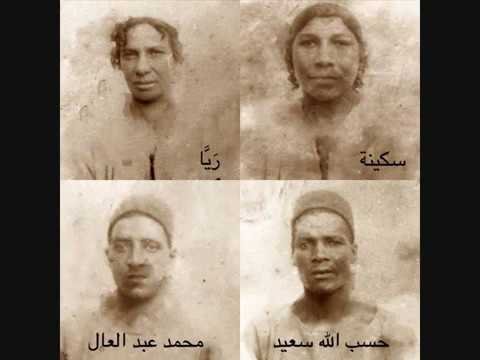
Lack of access to them [edit]
The gang continued to lure the victims and kill them until they reached 17 women (from the investigations). The police could not reach the plot for a long time. The most prominent reasons presented by some historians and writers were:
The spread of women fleeing their families at the time because of poverty or adoration, which justifies the disappearance of a person may rule out the idea of
murder or kidnapping.
Is that the uniform of the ladies scattered at the time is the robes and the black face cover and therefore no one can identify the identity of any woman or distinguish them.
The absence of any identity papers at the time, making it difficult to find the disappeared persons.
That the sisters Raya and Sakina were drawing women who have advance or possible to gain their trust, so the victim entered the house voluntarily without any noise or suspicion.
That the police had never suspected that the criminals were women, so the investigation focused on the suspects of men and no one thought or doubt at all being a gang of women, and that members of the gang of men did not suspect anyone because there is absolutely because they do not participate in the lures Which was the specialty of Ria and Sakina only.
Detecting their crimes [edit]
The beginning was in mid-January 1920 when 40-year-old Zaynab Hassan reported to Hadkardar Polis of Alexandria about the disappearance of her 25-year-old daughter, Nazlat Abu-Lail, 10 days ago. She said she was decorated with gold jewelry and ended with the mother's statement That she feared that her daughter had been killed by an act of stealing her gold.
Their house was discovered by chance. The house, where an old man lives in a dream and in agreement with an Italian citizen, rented the house, but the Italian tenant stipulated that the water and sewage should be connected to the house. [4]
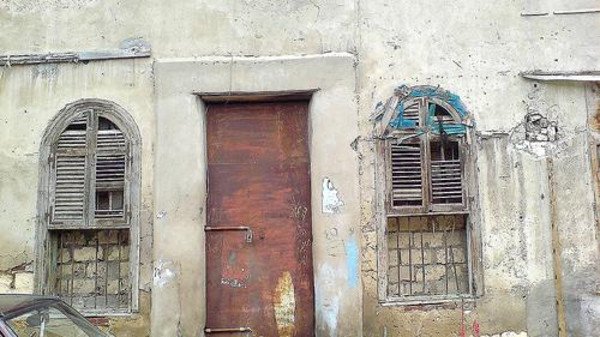
House now
Crime Theaters [edit]
The houses that witnessed the crimes were four, all located near the field of Manshiyeh, and was the market of the Alstat near the field of Manshiyya is the one where most of the victims of the two victims, and the houses are:
No. 5 Macoris Street in Karmouz District
No. 38 Ali Bak El Kebir Street.
No. 6 Al-Najat Neighborhood.
No. 8 Al-Najat Neighborhood.
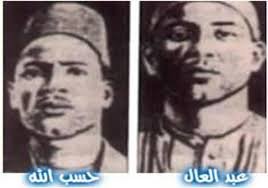
Photos of Abdel Aal and the Prophet of God
Investigations [edit]
Investigations began with the defendants, all of whom denied the charges against them, and with the investigation, his son Raya was interrogated, and "Badi'a", who admitted to seeing the crimes, and confronted the defendants with evidence and witnesses, confessed to committing these crimes.
Court Judgment [edit]
The crime of murder and robbery was directed at: Ria and her husband, God, Sakina and her husband Mohammed Abdel Aal, and two other persons named 'Arabi and' Abd al-Razzaq. The Alexandria Criminal Court sentenced all of them to death. The judge also sentenced the jeweler who bought gold Who were stolen from the two sisters for five years, while the court acquitted three other persons who had links with the criminals and were released.
They were executed on 21-22 December 1921.
Ria and Sakina in the media [edit]
The story of Raya and Sakina inspired many books and works of art
Raya and Sakina film, produced in 1953 starring Ibrahim Najm, Zuzou Hamdi El Hakim, Farid Shawki, Anwar Wagdy and Shukri Sarhan.
Ismail Yassin interviews Raya and Sakina, starring Ismael Yassin with starring Ibrahim, Zuzou Hamdi, Abdel Fattah Al Qusri and Riad Al Qasabji.
Raya and Sakina, produced in 1983, starring Sherihan and Yunis Shalaby and Hassan Abdeen.
Raya and Sakina, starring Suheir al-Babli, Shadia, Abdel Moneim Madbouli and Ahmed Bedair.
Raya and Sakina series, produced in 2005, starring Abla Kamel, Sameya Al Khashab, Sami Al Adl, Ahmed Maher, Salah Abdullah and Mohammed Al Shankagiri.
A radio series about the grandson of one of the feudalists - Pardessi - wanted to get quick money by repeating the works of Ria and Sakina and their gang, and disguised as a "dlala" to hunt for his victims. At the same time, there was a gang of one of the enemy countries, which was aimed at provoking panic among the largest number of citizens of Alexandria, by launching a rumor that he was not an ordinary person who had been arrested, as the police claim, but an already evil spirit that destroys those who challenge them. Represented by Youssef Shaaban, Madiha Hamdi and others.
A television program entitled: Raya and Sakina, presented by Hala Fakhir and Ghada Abdel Razek.